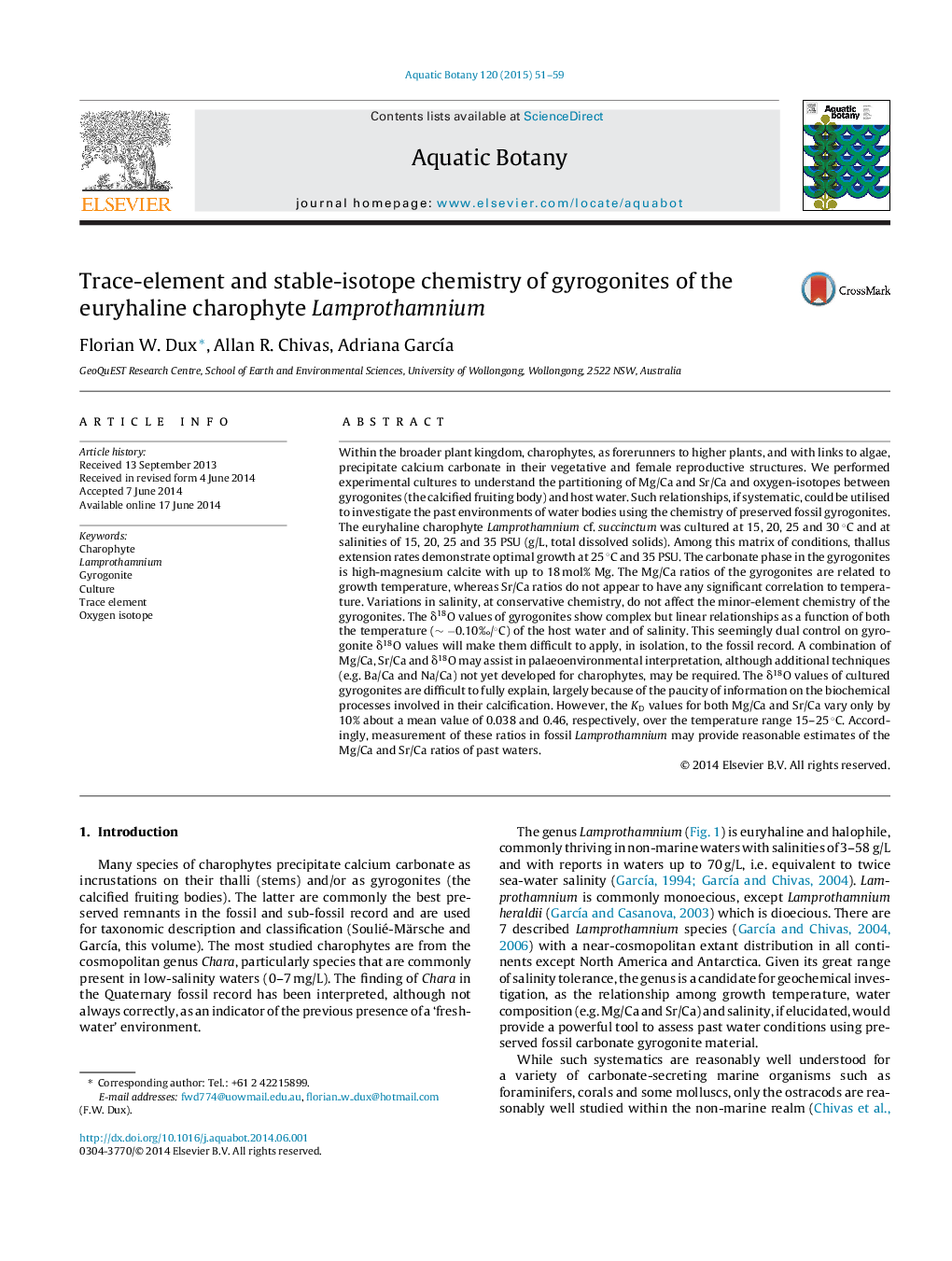| کد مقاله | کد نشریه | سال انتشار | مقاله انگلیسی | نسخه تمام متن |
|---|---|---|---|---|
| 4527735 | 1324258 | 2015 | 9 صفحه PDF | دانلود رایگان |
• First controlled-temperature culturing of Lamprothamnium for chemical studies.
• Optimal growth conditions of L. cf. succinctum are at 25 °C and 35 PSU.
• Gyrogonite carbonate chemistry can provide estimates of Mg/Ca and Sr/Ca of past waters.
• Variations in salinity do not affect the minor-element chemistry of the gyrogonites.
• The δ18O values of L. cf. succinctum display strong temperature and salinity effects.
Within the broader plant kingdom, charophytes, as forerunners to higher plants, and with links to algae, precipitate calcium carbonate in their vegetative and female reproductive structures. We performed experimental cultures to understand the partitioning of Mg/Ca and Sr/Ca and oxygen-isotopes between gyrogonites (the calcified fruiting body) and host water. Such relationships, if systematic, could be utilised to investigate the past environments of water bodies using the chemistry of preserved fossil gyrogonites. The euryhaline charophyte Lamprothamnium cf. succinctum was cultured at 15, 20, 25 and 30 °C and at salinities of 15, 20, 25 and 35 PSU (g/L, total dissolved solids). Among this matrix of conditions, thallus extension rates demonstrate optimal growth at 25 °C and 35 PSU. The carbonate phase in the gyrogonites is high-magnesium calcite with up to 18 mol% Mg. The Mg/Ca ratios of the gyrogonites are related to growth temperature, whereas Sr/Ca ratios do not appear to have any significant correlation to temperature. Variations in salinity, at conservative chemistry, do not affect the minor-element chemistry of the gyrogonites. The δ18O values of gyrogonites show complex but linear relationships as a function of both the temperature (∼ −0.10‰/°C) of the host water and of salinity. This seemingly dual control on gyrogonite δ18O values will make them difficult to apply, in isolation, to the fossil record. A combination of Mg/Ca, Sr/Ca and δ18O may assist in palaeoenvironmental interpretation, although additional techniques (e.g. Ba/Ca and Na/Ca) not yet developed for charophytes, may be required. The δ18O values of cultured gyrogonites are difficult to fully explain, largely because of the paucity of information on the biochemical processes involved in their calcification. However, the KD values for both Mg/Ca and Sr/Ca vary only by 10% about a mean value of 0.038 and 0.46, respectively, over the temperature range 15–25 °C. Accordingly, measurement of these ratios in fossil Lamprothamnium may provide reasonable estimates of the Mg/Ca and Sr/Ca ratios of past waters.
Journal: Aquatic Botany - Volume 120, Part A, January 2015, Pages 51–59
